-
 bitcoin
bitcoin $114779.865156 USD
2.30% -
 ethereum
ethereum $4226.519789 USD
2.39% -
 tether
tether $1.000545 USD
0.04% -
 xrp
xrp $2.890223 USD
0.92% -
 bnb
bnb $1030.029301 USD
2.95% -
 solana
solana $212.824944 USD
1.69% -
 usd-coin
usd-coin $0.999757 USD
0.01% -
 dogecoin
dogecoin $0.234961 USD
-0.27% -
 tron
tron $0.337174 USD
0.42% -
 cardano
cardano $0.804783 USD
0.09% -
 hyperliquid
hyperliquid $45.748770 USD
-2.85% -
 chainlink
chainlink $21.699170 USD
0.82% -
 ethena-usde
ethena-usde $1.001452 USD
0.08% -
 avalanche
avalanche $30.237800 USD
1.14% -
 stellar
stellar $0.372604 USD
1.52%
What is SHA-256?
SHA-256, a 256-bit hash function, secures Bitcoin transactions and blockchain integrity through its use in mining and verification processes.
Apr 07, 2025 at 11:15 pm
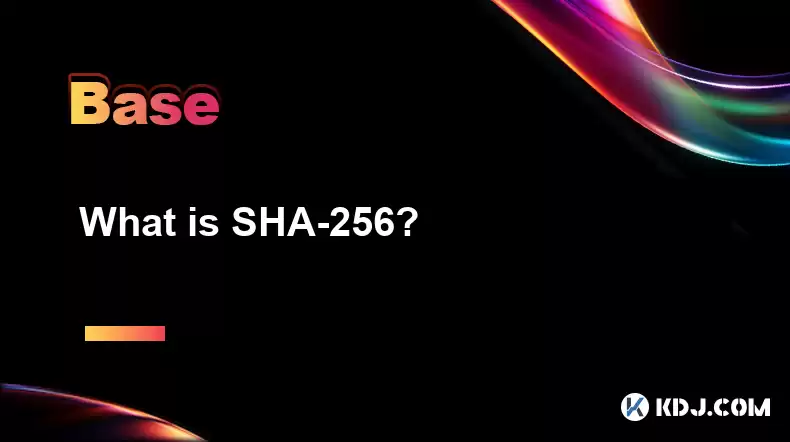
What is SHA-256?
SHA-256, or Secure Hash Algorithm 256-bit, is a cryptographic hash function that is part of the SHA-2 family of hash functions. It is widely used in the cryptocurrency world, particularly in Bitcoin and other blockchain technologies, for securing data and ensuring the integrity of transactions. This article will delve into the specifics of SHA-256, its applications in cryptocurrencies, and how it works.
The Basics of SHA-256
SHA-256 is designed to take an input, or 'message', and produce a fixed-size 256-bit (32-byte) hash value, typically rendered as a hexadecimal number, 64 digits long. The primary purpose of a hash function like SHA-256 is to ensure that even a small change in the input results in a significantly different output. This property is known as the avalanche effect.
The algorithm processes the input data in 512-bit blocks, and it uses a series of logical functions and bitwise operations to transform the data into the final hash value. The process is deterministic, meaning that the same input will always produce the same output, but it is also one-way, meaning it is computationally infeasible to reverse-engineer the original input from the hash.
Applications of SHA-256 in Cryptocurrencies
In the realm of cryptocurrencies, SHA-256 plays a crucial role in several key areas:
- Bitcoin Mining: Bitcoin uses SHA-256 as the proof-of-work algorithm. Miners compete to find a hash that meets the network's difficulty target, which involves repeatedly hashing the block header until a valid hash is found.
- Transaction Verification: Each transaction in the Bitcoin network is hashed using SHA-256, ensuring that any alteration to the transaction data will result in a different hash, thus maintaining the integrity of the transaction.
- Blockchain Integrity: The blockchain itself is secured by SHA-256, as each block contains the hash of the previous block, creating a chain of hashes that is extremely difficult to alter.
How SHA-256 Works
Understanding how SHA-256 works involves breaking down the process into several steps:
- Pre-processing: The input message is padded to ensure its length is a multiple of 512 bits. This involves adding a '1' bit, followed by as many '0' bits as necessary, and finally appending the original length of the message in bits as a 64-bit big-endian integer.
- Message Schedule: The padded message is divided into 512-bit blocks. Each block is further divided into 16 32-bit words. These words are then expanded into a 64-word message schedule using a series of bitwise operations.
- Hash Computation: The hash computation involves 64 rounds of processing, where each round uses a different set of constants and functions to mix the message schedule with the current hash state. The initial hash value is a set of eight 32-bit words, and after 64 rounds, these values are combined to produce the final 256-bit hash.
Security Features of SHA-256
SHA-256 is designed with several security features that make it suitable for use in cryptocurrencies:
- Collision Resistance: It is computationally infeasible to find two different inputs that produce the same output hash. This ensures that transactions cannot be altered without detection.
- Pre-image Resistance: It is extremely difficult to find an input that produces a specific output hash. This prevents attackers from reverse-engineering transactions.
- Second Pre-image Resistance: Given an input and its hash, it is hard to find another input that produces the same hash. This further enhances the security of the blockchain.
Practical Example of SHA-256 in Bitcoin
To illustrate how SHA-256 is used in Bitcoin, consider the process of mining a block:
- Block Header: The block header contains several pieces of information, including the version, the hash of the previous block, the Merkle root of the transactions, the timestamp, the difficulty target, and the nonce.
- Hashing Process: Miners take the block header and hash it using SHA-256. If the resulting hash does not meet the difficulty target, the miner changes the nonce and tries again. This process is repeated until a valid hash is found.
- Verification: Once a valid hash is found, other nodes on the network can verify the block by hashing the block header themselves and checking if the hash meets the difficulty target.
Implementing SHA-256 in Code
For those interested in seeing SHA-256 in action, here is a simple example using Python:
import hashlib
Example input
input_data = 'Hello, SHA-256!'
Create a SHA-256 hash object
hash_object = hashlib.sha256()
Update the hash object with the bytes of the input data
hash_object.update(input_data.encode('utf-8'))
Get the hexadecimal representation of the hash
hex_digest = hash_object.hexdigest()
print('SHA-256 Hash:', hex_digest)
This code snippet demonstrates how to use the hashlib library in Python to generate a SHA-256 hash from a given input string.
Frequently Asked Questions
Q: Can SHA-256 be used for other cryptocurrencies besides Bitcoin?A: Yes, SHA-256 is not exclusive to Bitcoin and can be used in other cryptocurrencies. For example, Bitcoin Cash and Bitcoin SV also use SHA-256 for their proof-of-work algorithms. However, other cryptocurrencies like Ethereum use different hash functions such as Ethash.
Q: Is it possible to decrypt a SHA-256 hash?A: No, SHA-256 is a one-way hash function, meaning it is designed to be irreversible. It is computationally infeasible to reverse-engineer the original input from the hash output.
Q: How does SHA-256 contribute to the security of a blockchain?A: SHA-256 contributes to the security of a blockchain by ensuring the integrity of transactions and the immutability of the blockchain. Each block contains the hash of the previous block, creating a chain of hashes that is extremely difficult to alter. Additionally, the use of SHA-256 in proof-of-work algorithms makes it computationally expensive to attempt to alter the blockchain.
Q: Are there any known vulnerabilities in SHA-256?A: As of now, there are no known practical vulnerabilities in SHA-256. However, like all cryptographic algorithms, it is subject to ongoing research and analysis. The cryptographic community continues to monitor and assess its security, but it remains a robust and widely trusted hash function.
Disclaimer:info@kdj.com
The information provided is not trading advice. kdj.com does not assume any responsibility for any investments made based on the information provided in this article. Cryptocurrencies are highly volatile and it is highly recommended that you invest with caution after thorough research!
If you believe that the content used on this website infringes your copyright, please contact us immediately (info@kdj.com) and we will delete it promptly.
- AI Training's Energy Crisis: Can Decentralization with Greg Osuri Offer a Solution?
- 2025-09-30 20:45:14
- Crypto Presales: Unlocking Potential 'Buy Now' for 'Presale Gains'
- 2025-09-30 21:05:15
- Prenetics, Danny Yeung, and Token 2049: A Bold Bitcoin Strategy
- 2025-09-30 20:45:14
- Bitcoin Investment in 2025: Navigating the Crypto Landscape
- 2025-09-30 20:50:11
- Pi Network Price Prediction & Crypto News: Navigating the Hype in a Utility-Driven Market
- 2025-09-30 21:05:15
- Dogecoin, Pepe Coin, and Remittix: Meme Mania Meets Utility in the Crypto Wild West
- 2025-09-30 20:50:11
Related knowledge

How does cryptocurrency achieve decentralization?
Sep 30,2025 at 04:37am
Understanding the Foundation of Decentralization in Cryptocurrency1. Cryptocurrency achieves decentralization primarily through the use of blockchain ...
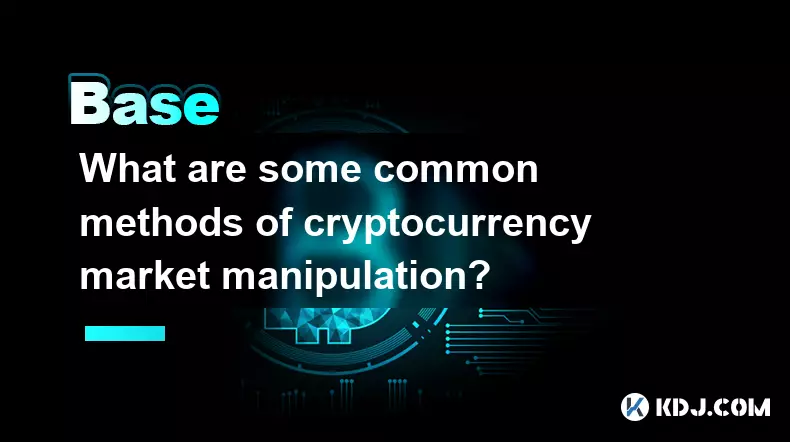
What are some common methods of cryptocurrency market manipulation?
Sep 27,2025 at 02:55am
Wash Trading and Its Impact on Market Perception1. Wash trading involves an individual or entity simultaneously buying and selling the same cryptocurr...
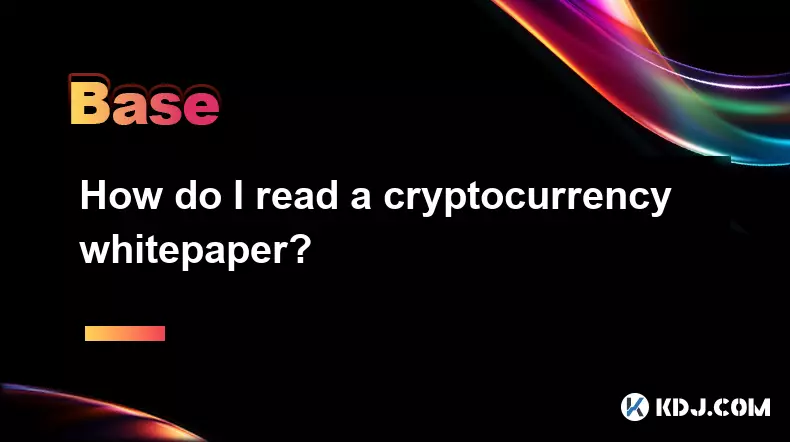
How do I read a cryptocurrency whitepaper?
Sep 27,2025 at 05:54am
Understanding the Structure of a Cryptocurrency Whitepaper1. Begin by identifying the executive summary, which outlines the project’s core vision and ...
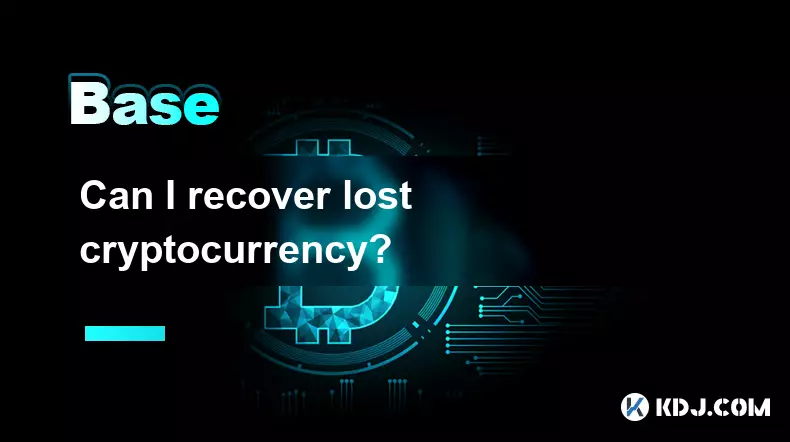
Can I recover lost cryptocurrency?
Sep 25,2025 at 08:18am
Understanding the Nature of Cryptocurrency Loss1. Cryptocurrency operates on decentralized networks, meaning there is no central authority to reverse ...
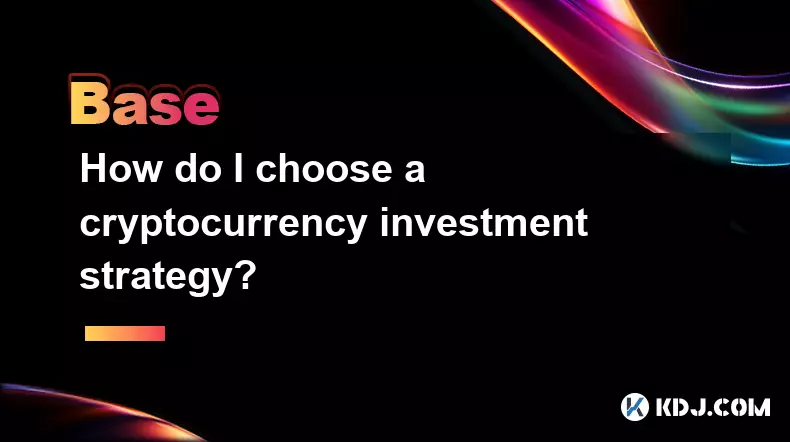
How do I choose a cryptocurrency investment strategy?
Sep 27,2025 at 03:55pm
Understanding Risk Tolerance in Crypto Investing1. Assessing personal risk tolerance is a foundational step when entering the cryptocurrency market. V...

How can I earn passive income from cryptocurrency?
Sep 23,2025 at 10:18am
Staking Cryptocurrencies for Regular Returns1. Many blockchain networks operate on a proof-of-stake (PoS) consensus mechanism, allowing users to earn ...

How does cryptocurrency achieve decentralization?
Sep 30,2025 at 04:37am
Understanding the Foundation of Decentralization in Cryptocurrency1. Cryptocurrency achieves decentralization primarily through the use of blockchain ...

What are some common methods of cryptocurrency market manipulation?
Sep 27,2025 at 02:55am
Wash Trading and Its Impact on Market Perception1. Wash trading involves an individual or entity simultaneously buying and selling the same cryptocurr...

How do I read a cryptocurrency whitepaper?
Sep 27,2025 at 05:54am
Understanding the Structure of a Cryptocurrency Whitepaper1. Begin by identifying the executive summary, which outlines the project’s core vision and ...

Can I recover lost cryptocurrency?
Sep 25,2025 at 08:18am
Understanding the Nature of Cryptocurrency Loss1. Cryptocurrency operates on decentralized networks, meaning there is no central authority to reverse ...

How do I choose a cryptocurrency investment strategy?
Sep 27,2025 at 03:55pm
Understanding Risk Tolerance in Crypto Investing1. Assessing personal risk tolerance is a foundational step when entering the cryptocurrency market. V...

How can I earn passive income from cryptocurrency?
Sep 23,2025 at 10:18am
Staking Cryptocurrencies for Regular Returns1. Many blockchain networks operate on a proof-of-stake (PoS) consensus mechanism, allowing users to earn ...
See all articles










































































